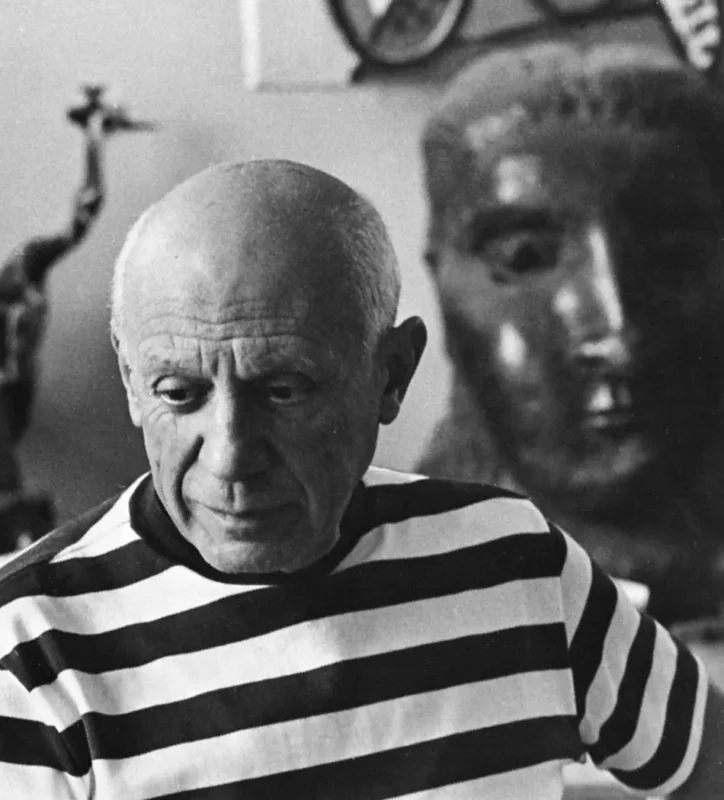Pablo Picasso: A Life Devoted to Redefining Art
Pablo Picasso (1881-1973) stands as a giant of 20th-century art. A Spanish painter, sculptor, printmaker, and ceramicist, his influence on modern and contemporary art is immeasurable. Let’s delve into his remarkable biography:
Early Years and Artistic Awakening (1881-1900):
- Born in Málaga, Spain, Picasso displayed artistic talent at a young age. His father, José Ruiz Blasco, was a painter and his first teacher.
- By 13, Picasso’s skills surpassed his father’s. He had his first exhibition in A Coruña, Spain.
The Blue Period (1901-1904):
- Moving to Paris, the center of the European art world, Picasso entered his Blue Period.
- Works from this time are melancholic, filled with somber blues and greens, reflecting personal struggles and poverty.
The Rose Period (1904-1906):
- A shift towards a more optimistic outlook is seen in the Rose Period. Paintings feature brighter colors, with pinks and oranges dominating.
- The subject matter often focused on circus performers and harlequins.

Proto-Cubism and the Birth of Cubism (1906-1912):
- Influenced by African and Iberian art, Picasso, along with Georges Braque, began to break down objects into geometric forms, ushering in the revolutionary Cubist movement.
- Cubism aimed to depict multiple viewpoints of an object on a single plane.
Cubism’s Evolution and Diversification (1912-1917):
- Cubism further fragmented, with Picasso and Braque incorporating collage techniques using newspaper clippings and other materials.
Beyond Cubism: Diverse Explorations (1917-1973):
- Picasso’s artistic journey wasn’t confined to Cubism. He explored various styles throughout his career, including Neoclassicism, Surrealism, and Expressionism.
- His most famous painting, Guernica (1937), a powerful condemnation of war’s brutality, exemplifies his ability to adapt his art to social commentary.
Personal Life and Legacy:
- Picasso’s personal life was as vibrant as his art. He had numerous romantic relationships, inspiring many of his works.
- Prolific throughout his long life, Picasso produced an astonishing number of paintings, sculptures, prints, and ceramics, estimated to be over 20,000 pieces.
A Final Note:
Picasso’s genius redefined artistic expression in the 20th century. His constant experimentation and ability to push boundaries continue to inspire artists today.
For a deeper exploration of Picasso’s life and work, you can refer to online resources like the Museo Picasso Barcelona https://museupicassobcn.cat/en/plan-your-visit/buy-tickets-and-opening-hours or books on his various artistic periods.

